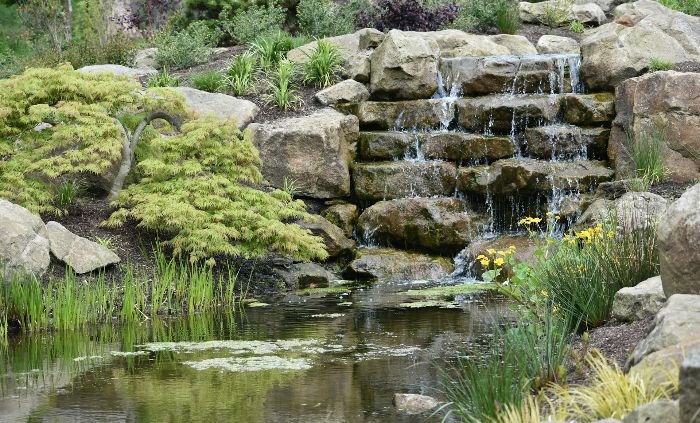Ever thought about how some plants live in high, cold places with hard lives? These places have rocky soil and not much water. Yet, some plants grow well there.
What’s their secret? How do they not just live but do so well? In this article, we’ll learn about these tough plants. We will look at what makes them so special for alpine places.
Key Takeaways:
- Rock garden plants are specifically chosen for their ability to thrive in alpine conditions.
- Alpine conditions are characterized by rocky and well-draining soil, intense sunlight, strong winds, and extreme temperature fluctuations.
- Rock garden plants have unique adaptations and characteristics that allow them to withstand and thrive in these challenging conditions.
- By understanding the selection criteria for rock garden plants, you can create a visually appealing and sustainable rock garden.
- Rock gardens offer practical benefits and contribute to biodiversity while requiring less water and maintenance compared to traditional gardens.
Table of Contents
Introduction to Rock Garden Plants
Rock gardens are a special way to make your outdoor space more beautiful. They use plants that do well in rocky areas, like the mountains. These plants create a beautiful, natural look in your garden.
We will talk about why rock gardens are good and the kind of plants they need. This will help you understand how rock garden plants are different.
Benefits of Rock Gardens
Rocks gardens need little work to keep them looking nice. They help save water and are perfect if you’re often busy. The rocks and special soil also stop soil from washing away. This helps the land and saves water.
Rock gardens help little animals and insects find homes. Bees and butterflies love the flowers, which helps nature around you. Adding a rock garden improves your yard and helps the environment.
Understanding Alpine and Rocky Conditions
Alpine places are very high up and have tough weather. They have rocky soil, lots of sun, and strong winds. The weather can change a lot, too.
Plants in rocky areas face challenges. The soil drains well but has few nutrients. They also deal with big changes in temperature and lots of sun, which rocks can make even stronger.
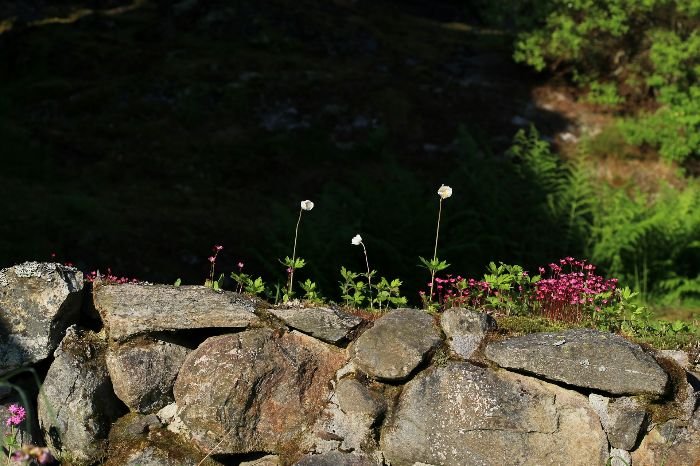
Knowing about these tough conditions helps you pick the right plants for your rock garden. They will do well because they’re used to these hard situations.
Characteristics of Rock Garden Plants
Rock garden plants are very special. They have traits that help them in rocky places. These traits make sure they can live and grow well. It’s important to know these traits so you can pick the best plants for your rock garden.
Adaptations for Surviving in Rocky Conditions
One key trait is their shallow roots. These roots let the plants grip the rocks. They also help the plants find food and water easily. They use the surface of the rocky soil to their advantage.
Many rock plants have thick, juicy leaves, too. These leaves hold water in times without rain. This keeps the plants alive when water is hard to find. So, they’re good at living in dry places.
They’re also ready for tough weather up high in the mountains. These plants can handle lots of sun, wind, and cold. They’ve learned to live in places with very rough weather. This includes both hot and cold areas.
Traits of Successful Alpine Plants
Alpine plants do well in rocky soil because they like soil that dries fast. This keeps their roots from getting too wet. So, they prevent water damage this way.
They’re also okay with big changes in how hot or cold it gets. This means they’re ready for days that are warm and nights that are cold. Their bodies can handle these big swings in temperature.
And, they grow close together to stay safe from strong winds. Being close helps them not get blown away. It also keeps them from losing too much water. Plus, it helps them make food by photosynthesis.
These plant traits and adaptations make them perfect for rock gardens. By knowing about these plants, you can make a beautiful rock garden. It will do well even in tough spots.
Selecting Plants for Rock Gardens
When you make a rock garden, picking the right plants is key. Think about a few things to make your garden a success.
Factors to Consider When Choosing Plants
Choosing plants for your rock garden needs thought. Here’s what to consider:
- Desired plant height – Think about how tall the plants will be. Big plants can stand out or act as a background. Small plants can fill spaces.
- Bloom time – Look at when plants bloom. Picking different bloom times keeps your garden pretty all season.
- Color palette – Decide on colors for your garden. Pick flowers and foliage that go well together for a nice look.
- Growth habit – Check how plants grow. Some spread fast, covering spaces. Others grow in clusters, adding variety.
Matching Plants to Your Garden’s Conditions
It’s important to match plants with your garden’s needs for their success. Think about the following:
- Soil type – Some plants like dry sandy soil, while others need moist loam. Pick plants that suit your garden’s dirt.
- Sun exposure – Figure out how much sun your garden gets. Choose plants that love the light level, full sun, shade, or in-between.
- Average temperatures – Think about your area’s average temperatures. Pick plants that can handle the cold or heat well.
By picking plants that fit your garden’s needs, your rock garden will thrive and look stunning.
Top Plants for Rock Gardens
When picking plants for a rock garden, some stand out. They cope well in tough spots and look lovely. This makes your rock garden more colorful and interesting.
Succulents and Sedums
Succulents and sedums have thick, fleshy leaves for water storage. They’re great for dry areas and alpine regions. For example, hens and chicks and stonecrop are good choices. They have unique shapes and colors. Agave is another option with its sharp leaves.
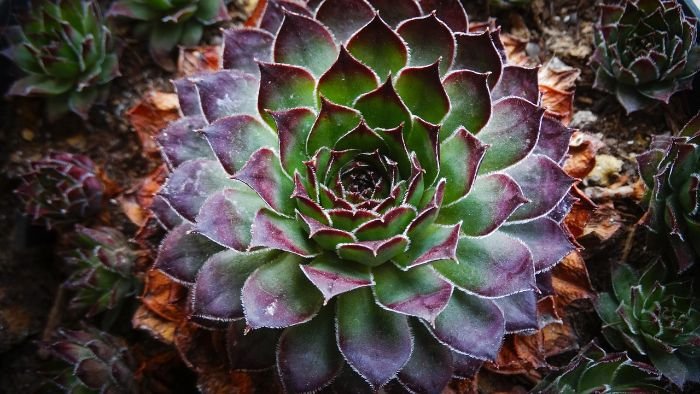
Alpine Perennials
Alpine perennials do well in high-altitude rock gardens. They bring fine beauty and strong qualities. Edelweiss is famous for its white flowers. Saxifrage has pretty, detailed blooms. Dianthus, or pinks, smell good and look pretty, attracting bees and butterflies.
Groundcovers and Creeping Plants
Groundcovers and creepers are key in rock gardens. They cover the ground and spaces between rocks nicely. Creeping thyme smells great and is tough under feet. Aubrieta is bold and spreads, showing off vibrant blooms. Phlox Subulata is low, with lots of flowers for color.
So, by using these plants, you can make a beautiful rock garden. It will be both eye-catching and full of life.
Succulents and Sedums for Rock Gardens
Succulents and sedums are perfect for rock gardens. They store water in their leaves, so they don’t need much water. These plants can live in dry places, which makes them strong and great for rock gardens. They look cool with their different shapes and colors. Plus, they are easy to take care of, perfect for people who are busy.
Hens and Chicks (Sempervivum)
Hens and Chicks, also known as Sempervivum, are top picks for rock gardens. They grow in a circle shape and make baby plants around them. This makes the garden look full and colorful. You can find them in many colors like green, red, and purple.
Stonecrop (Sedum)
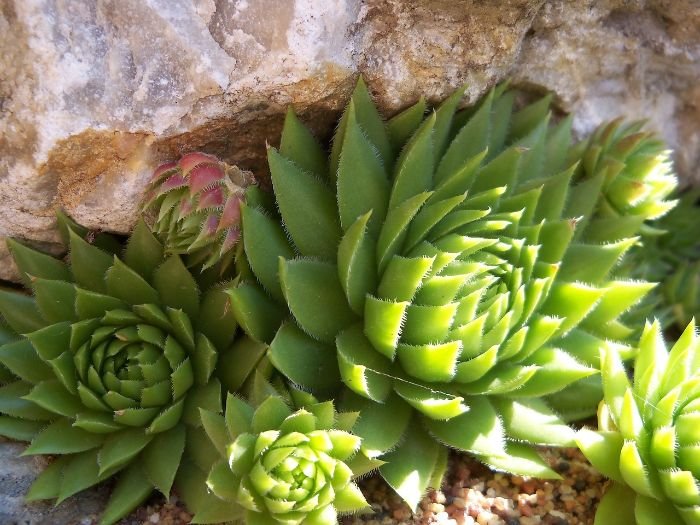
Stonecrop or Sedum is a great choice for rock gardens too. It comes in lots of types, with different shapes and flower colors. Some types stay low on the ground, while others grow taller. Stonecrop makes your rock garden look interesting and attracts bees and butterflies with its small flowers.
Agave – Hardy and Attractive
Agave is another good option for rock gardens. It has spiky leaves and is very tough. Agave plants last a long time, which means your rock garden will look good for years. They make your garden stand out with their unique style.
Succulents and sedums are great for rock gardens. They store water in their leaves and need little care. Using these plants in your rock garden makes it both beautiful and resilient. Enjoy a thriving garden with these special choices.
Alpine Perennials for Rock Gardens
Alpine perennials bring lasting beauty to rock gardens. They grow well in tough alpine climates. This makes them perfect for rock garden settings.
Edelweiss – Iconic Alpine Beauty
Edelweiss has white flowers that make any rock garden shine. This plant stands for the beauty found high in the mountains. It has thick leaves that help it brave the cold and rocky areas.
Saxifrage – Delicate and Resilient
Saxifrage is a fine perennial with pretty flowers. It grows well in different rocky spots. This plant can handle the tough conditions of alpine places. There are many types of Saxifrage with different flower colors. They bring beauty and interest to rock gardens.
Dianthus – Fragrant and Colorful
Dianthus, or pinks, are a favorite for rock gardens. They smell good and come in bright colors. These flowers attract helpful insects too. They do well in rocky places and bloom for a long time.
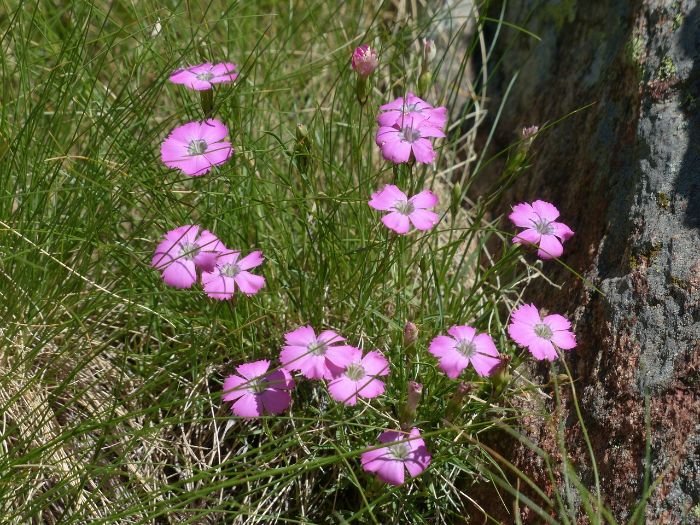
Groundcovers and Creeping Plants
Groundcovers and creeping plants are key in rock gardens. They cover the soil between rocks. And they also bring texture and color to the garden. Popular choices are Creeping Thyme, Aubrieta, and Phlox Subulata.
Creeping Thyme – Aromatic and Hardy
Creeping Thyme has aromatic leaves and lovely flowers. It provides beauty and smells good too. It grows into a dense mat, good for walkways. It can handle rocky soil and full sun.
Aubrieta – Vibrant and Spreading
Aubrieta is known for its vibrant colors and spreading growth. It hangs over rocks and walls beautifully. This plant comes in purple, blue, pink, and white. It makes the garden look charming and colorful.
Phlox Subulata – Low-Growing and Colorful
Phlox Subulata, or Creeping Phlox, is loved for its colorful, low flowers. Its evergreen leaves make a nice colored carpet. It comes in pink, purple, blue, and white. You can create a stunning rock garden with it.
Adding plants like Creeping Thyme, Aubrieta, and Phlox Subulata make your rock garden beautiful. They cover the ground, grow in rocky areas, and add color. They highlight the beauty of your garden.
Designing a Rock Garden
Designing a rock garden is exciting and requires careful thought. You need to think about layers, rocks, and plant types. Doing this turns your garden into a beautiful place that works well together.
Creating Layers and Levels
It’s key to make your rock garden look like a natural rocky area. Create different heights and shapes to make it interesting. Use rocks of various sizes and place them to form terraces. You can also build up areas with walls or soil mounds.
This adds depth and lets plants grow in their favorite spots.
Incorporating Rocks and Hardscaping
Rocks are essential for a rock garden. You can use them to draw attention, make borders, or look like natural parts of the landscape. Choose rocks with unique looks to give your garden a special touch.
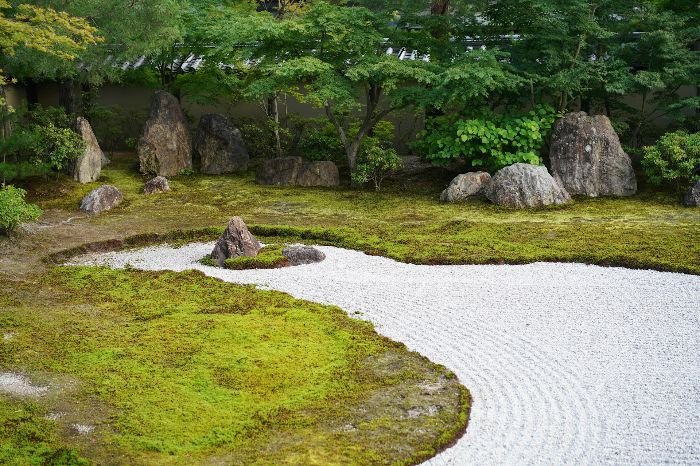
Paths, stairs, and walls are also important. They help people walk around and make your garden look nice, holding everything together.
Combining Different Plant Types
Mixing plants is vital for a stunning rock garden. Use tall, short, succulents, and perennials to create a lively area. Think about plants with different colors and textures. Make sure they all like the same amount of sun and water for a healthy garden.
Creating a rock garden means thinking about layers, rocks, and plants. These steps, along with your style, will craft a lovely garden that fits with your outdoor area.
Conclusion – Enhancing Your Garden with Rock Plants
Rock garden plants bring beauty and ease to your garden. They grow well in alpine conditions. This makes them perfect for creating wonderful rock gardens. So, you can make your garden look lovely with the right plants and design.
These plants can handle tough weather. They thrive in sunlight, winds, and changing temperatures. Their ability to grow around rocks helps them get food and water. This is key for their survival.
Picking the right rock garden plants is important. Consider their height, when they bloom, and the colors they have. It’s also crucial to think about your garden’s climate and soil. Doing so will make your rock garden beautiful and healthy.
It doesn’t matter if your garden is big or small. With the right plants and a good design, your rock garden will flourish. Use your imagination to create a beautiful and sustainable garden. Make your outdoor space stand out with these unique plants.
FAQ
What is a rock garden?
A rock garden is a special spot filled with plants that love high places. These plants can live in places like the tops of mountains.
What are alpine conditions?
Alpine conditions are found at high altitudes. They have rocky soil, get lots of sun, strong winds, and big temperature changes.
What are the benefits of rock gardens?
Rock gardens don’t need a lot of water or care. This makes them perfect for people who are often too busy. They help nature by giving homes to insects and birds, which makes them good for the environment.
What characteristics do rock garden plants have?
Rock garden plants don’t grow deep roots. They cling to rocks for support and to find water. Their leaves can store water. They also have special ways to handle the bright sun, wind, and cold or hot weather.
What factors should I consider when selecting plants for my rock garden?
Choosing the right plants for your rock garden is key. Think about how tall you want them to be and when they should flower. Pick colors that look good together. It’s also very important to choose plants that can live in the soil, sun, and weather of your area.
What are some examples of succulents for rock gardens?
Hens and Chicks, Stonecrop, and Agave are great for rock gardens. They have leaves that are good at saving water.
What are some examples of alpine perennials for rock gardens?
Hardy plants like Edelweiss, Saxifrage, and Dianthus do well in rock gardens. They are also called pinks.
How should I design a rock garden?
Create your rock garden with different plant layers and heights. Use paths and walls to make it interesting. A mix of succulents and perennials will make it look lively.
What are the benefits of rock garden plants?
Rock garden plants are pretty, tough, and easy to care for. By choosing the right ones and planning well, you can have a beautiful, hardy garden.






